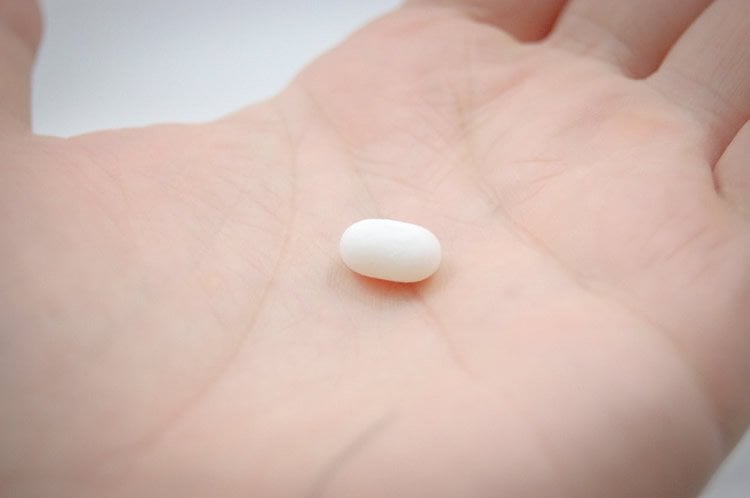Summary: Researchers say a new compound simultaneously blocks two sought after pain targets.
Source: Duke.
New drug blocks two sought-after pain targets.
A research team at Duke University has discovered a potential new class of small-molecule drugs that simultaneously block two sought-after targets in the treatment of pain.
These proof-of-concept experiments, published June 1 in Scientific Reports, could lead to the development of a new drug to treat conditions including skin irritation and itching, headaches, jaw pain, and abdominal pain stemming from the pancreas and colon.
More than 100 million people suffer from chronic pain in the United States, according to a report from the Institute of Medicine, and new medicines are badly needed.
“We are very pleased with what is a first chapter in a highly promising story,” said Wolfgang Liedtke, M.D., Ph.D., a professor of neurology, anesthesiology and neurobiology at Duke University School of Medicine, who treats patients with head and face pain and other sensory disorders. “We hope to be able to develop these compounds for clinical use in humans or animals.”
In the new study, the researchers initially aimed to develop more effective blockers of TRPV4, a molecule their previous research had shown transmits skin irritation elicited by sunburn, and painful sensations coming from the head and face. Liedtke and his Duke collaborator Farshid Guilak used a prototype TRPV4 blocker in a 2009 study and then set out to develop more potent versions.
Compared to the prototype, one of the new candidate drugs, called “16-8,” worked 10 times more effectively in cells with active TRPV4 that are key for the development of osteoarthritis. It also worked well in another cell type involved in nerve cell injury, stroke and epilepsy.
But to their surprise, when assessing the specificity of 16-8, the scientists discovered that it also blocked TRPA1, which is a promising target in pain and itch research.
“As a physician, I soon realized the enormous potential that these compounds might have, given how beneficial dual-target molecules can be in clinical medicine,” Liedtke said.
Both TRPV4 and TRPA1 are members of the family of TRP ion channels, which function in sensory nerve cells to directly sense painful stimuli. Other research groups are now targeting these channels in clinical trials for pain relief.

In this study, the drug 16-8 also quelled pain in living animals, including abdominal aches in mice with pancreas inflammation. So-called pancreatitis is extremely painful and difficult to treat, and new cases are on the rise globally, said study co-author Rodger Liddle, M.D., of the Duke University School of Medicine and a member of the Duke Institute for Brain Sciences.
Liedtke sees potential for the 16-8 drug to treat osteoarthritis and other types of joint pain as well as head, face and jaw pain. In general, it might also treat aches radiating from internal organs or resulting from nerve cell injury.
The group’s preclinical work will focus on understanding the compound’s potential use in these conditions as well as learning more about how it works. They also hope to explore topical applications to mucous membranes, which are present throughout the body and skin.
Funding: The study was supported by the National Institutes of Health (DE018549, AR48182, AR48182-S1, AR48852, AG15768, AR50245, AG46927, DK064213, DK091946, DK098796, F33DE024668, K12DE022793, K12CA100639, the U.S. Department of Defense (W81XWH-13-1-0299), the U.S. Department of Veterans Affairs, the National Science Foundation (1445792), the Arthritis Foundation, and the Harrington Discovery Institute Scholar-Innovator Award. Duke’s Office of Licensing and Ventures is pursuing patent applications on this work.
Source: Karl Bates – Duke
Image Source: This NeuroscienceNews.com image is in the public domain.
Original Research: Full open access research for “Small molecule dual-inhibitors of TRPV4 and TRPA1 for attenuation of inflammation and pain” by Patrick Kanju, Yong Chen, Whasil Lee, Michele Yeo, Suk Hee Lee, Joelle Romac, Rafiq Shahid, Ping Fan, David M. Gooden, Sidney A. Simon, Ivan Spasojevic, Robert A. Mook, Rodger A. Liddle, Farshid Guilak and Wolfgang B. Liedtke in Scientific Reports. Published online June 1 2016 doi:10.1038/srep26894
[cbtabs][cbtab title=”MLA”]Duke. “New Class of Pain Relievers Discovered and Tested.” NeuroscienceNews. NeuroscienceNews, 1 June 2016.
<https://neurosciencenews.com/new-pain-killers-tested-4353/>.[/cbtab][cbtab title=”APA”]Duke. (2016, June 1). New Class of Pain Relievers Discovered and Tested. NeuroscienceNews. Retrieved June 1, 2016 from https://neurosciencenews.com/new-pain-killers-tested-4353/[/cbtab][cbtab title=”Chicago”]Duke. “New Class of Pain Relievers Discovered and Tested.” https://neurosciencenews.com/new-pain-killers-tested-4353/ (accessed June 1, 2016).[/cbtab][/cbtabs]
Abstract
Small molecule dual-inhibitors of TRPV4 and TRPA1 for attenuation of inflammation and pain
TRPV4 ion channels represent osmo-mechano-TRP channels with pleiotropic function and wide-spread expression. One of the critical functions of TRPV4 in this spectrum is its involvement in pain and inflammation. However, few small-molecule inhibitors of TRPV4 are available. Here we developed TRPV4-inhibitory molecules based on modifications of a known TRPV4-selective tool-compound, GSK205. We not only increased TRPV4-inhibitory potency, but surprisingly also generated two compounds that potently co-inhibit TRPA1, known to function as chemical sensor of noxious and irritant signaling. We demonstrate TRPV4 inhibition by these compounds in primary cells with known TRPV4 expression – articular chondrocytes and astrocytes. Importantly, our novel compounds attenuate pain behavior in a trigeminal irritant pain model that is known to rely on TRPV4 and TRPA1. Furthermore, our novel dual-channel blocker inhibited inflammation and pain-associated behavior in a model of acute pancreatitis – known to also rely on TRPV4 and TRPA1. Our results illustrate proof of a novel concept inherent in our prototype compounds of a drug that targets two functionally-related TRP channels, and thus can be used to combat isoforms of pain and inflammation in-vivo that involve more than one TRP channel. This approach could provide a novel paradigm for treating other relevant health conditions.
“Small molecule dual-inhibitors of TRPV4 and TRPA1 for attenuation of inflammation and pain” by Patrick Kanju, Yong Chen, Whasil Lee, Michele Yeo, Suk Hee Lee, Joelle Romac, Rafiq Shahid, Ping Fan, David M. Gooden, Sidney A. Simon, Ivan Spasojevic, Robert A. Mook, Rodger A. Liddle, Farshid Guilak and Wolfgang B. Liedtke in Scientific Reports. Published online June 1 2016 doi:10.1038/srep26894






